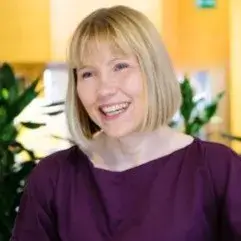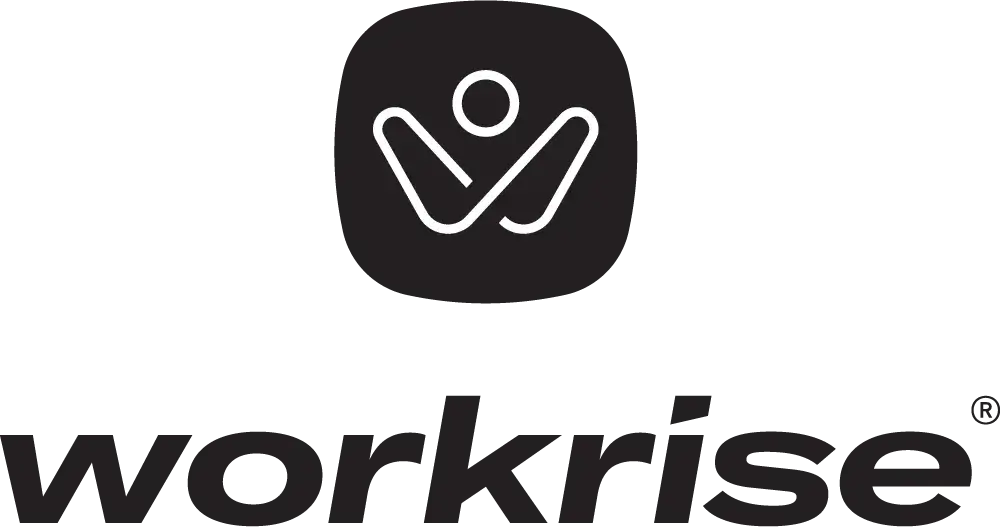Ready to build your own Founder-Led Growth engine? Book a Strategy Call
Frontlines.io | Where B2B Founders Talk GTM.
Strategic Communications Advisory For Visionary Founders
Actionable
Takeaways
Leverage Market Trends for Product Pivoting:
John’s pivot from a social app for moms to a chat API was driven by the rising popularity of messaging platforms like WhatsApp and WeChat. Stay attuned to market trends and be ready to pivot your product to meet new demands.
SEO as a Growth Strategy:
Sendbird’s early success was significantly boosted by optimizing for specific keywords such as "chat API" and "chat SDK." Ensure your marketing strategy includes strong SEO practices to drive organic growth and inbound leads.
Customer-Centric Development:
Constantly engage with your customers to understand their needs. John emphasized the importance of talking to customers regularly and using their feedback to guide product development and improvements.
Strategic Marketing Team Building:
As your company grows, evolve your marketing efforts from generalist approaches to specialized roles like demand generation and product marketing. This transition can help in effectively scaling your marketing operations and driving targeted growth.
Conversation
Highlights
From Mom App to Unicorn: Sendbird’s Remarkable Journey
In the fast-paced world of tech startups, pivots can make or break a company. For Sendbird, a customer communications platform that has raised over $220 million in funding, a crucial pivot led to explosive growth and unicorn status. CEO and co-founder John Kim shares the company’s fascinating journey from a struggling mom-focused app to a communication giant handling over 320 million monthly active users.
The Accidental Discovery
Sendbird’s story begins in 2013, not as a communication platform, but as a location-based service for moms. Kim recalls, “We’re trying to really create a community for moms. So it’s a location-based service, trying to help moms connect with other moms in your area with similarized kids.”
Despite growing to about a quarter-million users, the app began to slow down. Then, an unexpected user behavior caught the team’s attention. Kim explains, “We start to see a lot of our moms try to chat in the comment section, or like, okay, well, it was supposed to be answer about the question, but they’re talking about their in-laws trash talking about their husband.”
This observation led to a critical realization: “We actually want messaging feature in our own application. That’s where we got the first idea for Sendbird.”
The Pivot That Changed Everything
In a move that would define the company’s future, the team decided to create a chat SDK from their messaging feature. Kim shares, “We did a hackathon, pulled that out to the side and made it into SDK, started selling that on the side, quickly, got some revenue.”
The contrast was stark. While their mom app had generated zero revenue for two and a half years, this new product started bringing in paying customers almost immediately. The team applied to Y Combinator, got accepted, and launched to the world in January 2016.
Lessons from Y Combinator
Y Combinator’s influence on Sendbird’s growth strategy was significant. Kim emphasizes their core advice: “YC has a saying, talk to customers and build product. Or they say, used to say write code and try to do nothing else.” This laser focus on customer needs and product development became a cornerstone of Sendbird’s approach.
The Harsh Reality of Selling to Startups
As Sendbird grew, they faced the harsh realities of the B2B SaaS world. Initially targeting startups in gaming and social networking, they soon discovered the volatility of this market. Kim reflects, “You start getting this email from the founders that you sold in the early days, like year later, they’re like, ‘John, I’m sad to say this, but we’re shutting down our company. We ran out of money.'”
This experience led to a crucial pivot in their customer strategy. Kim explains, “Over time, more and more customers in the mid-market to enterprise categories start to survive over longer term period.” This natural evolution pushed Sendbird towards larger, more stable clients in industries like food delivery and marketplaces.
The Marketing Evolution
Sendbird’s marketing approach evolved significantly as the company grew. In the early days, it was a DIY effort. Kim recalls, “Initially all of our marketing was basically me and one other guy trying to read up on how to do SEO. Oh, we have to take turns and write blog posts.”
As the company scaled, they developed specialized marketing functions and learned to work with external agencies. Kim emphasizes the importance of scaling through people: “Ultimately, companies scale mostly through people. So by bringing on people, we took this company this far, now we have to bring on some professional leadership.”
Reflections on Success
Despite Sendbird’s impressive growth, Kim maintains a humble perspective: “I think everything’s wrong. We can do far better. One of our core values called better than the best, we believe there’s always a way to do things better.”
However, he acknowledges two key factors in their success: customer obsession and inclusive culture. Kim shares, “I, on a weekly basis, I talk to anywhere between two to five customers every single week.” This dedication to understanding customer needs has been crucial to Sendbird’s growth.
The Road Ahead
Today, Sendbird handles over 320 million monthly active users, with over six billion end-users. But Kim’s ambitions don’t stop there. He envisions Sendbird becoming “the largest messaging app in the world that nobody knows about,” aiming to reach billions more users in the coming years.
Sendbird’s journey from a failed mom app to a unicorn is a testament to the power of pivoting, customer focus, and continuous improvement. As they continue to innovate in the customer communications space, Sendbird’s story serves as an inspiration for startups navigating the challenging world of B2B SaaS.
Recommended Founder
Interviews


Sean Duffy
Co-Founder & CEO of Omada Health
Sean Duffy: the Story of Omada Health ($1+ Billion Valuation)


Steffen Tjerrild
Co-Founder, CFO & COO of Synthesia
Steffen Tjerrild: The Story of Synthesia ($1 Billion Valuation)

Ajay Kulkarni
CEO of Timescale
Ajay Kulkarni: the Story of Timescale ($1+ Billion Valuation)


Kyle Hanslovan
CEO & Co-Founder of Huntress
What happens when you outgrow your messaging? w/ Huntress CEO Kyle Hanslovan


Raj De Datta
CEO & Co-founder of Bloomreach
Raj De Datta: the GTM Story of Bloomreach ($2.2 Billion Valuation)


Dave Wessinger
CEO and Co-Founder of PointClickCare
Dave Wessinger: the Story of PointClickCare ($5 Billion Valuation)


Gary Hoberman
CEO & Founder of Unqork
Gary Hoberman: the GTM Story of Unqork ($2B+ Valuation)

Zeb Evans
CEO & Founder of ClickUp
How ClickUp survived the 2021 growth at all costs era and came out stronger ($300M ARR)


Michel Tricot
Co-Founder & CEO of Airbyte
Michel Tricot: the Story of Airbyte ($1.5 Billion Valuation)


Kevin Busque
CEO and Founder of Guideline
Kevin Busque: the Story of Guideline ($1.1B+ Valuation)


Alex Israel
Co-Founder & CEO of Metropolis
The wild GTM story behind Metropolis raising $2B to take a company private and get their tech adopted faster | Alex Israel


Johanna Småros
Co-Founder & Chief Sustainability Officer of RELEX Solutions
Johanna Småros: the Story of RELEX Solutions ($5.7 Billion Valuation)


Abhay Parasnis
Founder and CEO of Typeface
Abhay Parasnis: the Story of Typeface ($1 Billion Valuation)


Martin Mao
CEO of Chronosphere
Martin Mao: The Story of Chronosphere ($1.6 Billion Valuation))


Doug Winter
CEO and Co-Founder of Seismic
Doug Winter: The GTM Story of Seismic ($3 Billion Valuation)


Jason Zintak
CEO of 6sense
Jason Zintak: The GTM Story of 6sense ($5.2 Billion Valuation)


Sean Henry
CEO & Co-Founder of Stord
Sean Henry: How Stord Built a Commerce Enablement Platform ($1B+ Valuation) That Rivals Amazon’s Logistics Network


Des Traynor
Co-Founder of Intercom
How Intercom survived by cannibalizing their own business model before competitors could | Des Traynor


Jean Paul Chauvet
CEO of Lightspeed
Jean Paul Chauvet: the Story of Lightspeed ($2+ Billion Valuation)


Marc-Alexander Christ
Co-Founder of SumUp
Marc-Alexander Christ: the Story of SumUp ($8.5 Billion Valuation)


Florian Douetteau
CEO of Dataiku
How Dataiku serves 700+ enterprise customers by becoming the AI governance layer | Florian Douetteau

Henry Kim
CEO & Co-Founder of Swiftly
Henry Kim: The GTM Story of Swiftly ($1B+ Valuation)


Tom Jermoluk
CEO of Beyond Identity
Tom “TJ” Jermoluk: The GTM Storyteller of Beyond Identity ($1.1 Billion Valuation)


Kyle Clark
Team Member of Beta Technologies
Kyle Clark: the Story of Beta ($1.2 Billion Valuation)


Harrison Rose
Co-Founder of Paddle
Harrison Rose: the Story of Paddle ($1.4 Billion Valuation)


Sean Henry
CEO & Co-Founder of Stord
Sean Henry: How Stord Built a Commerce Enablement Platform ($1B+ Valuation) That Rivals Amazon’s Logistics Network


Philip Cutler
CEO and Founder of Paper
Philip Cutler: The GTM Story of Paper ($1.5B Valuation)


Marcelo Lebre
President of Remote
Marcelo Lebre: the Story of Remote ($3 Billion+ Valuation)


Spike Lipkin
CEO and Co-founder of Newfront
Spike Lipkin: the GTM Story of Newfront ($2.2 Billion Valuation)


Dave Wessinger
CEO and Co-Founder of PointClickCare
Dave Wessinger: the Story of PointClickCare ($5 Billion Valuation)


Karl Siebrecht
Co-Founder & CEO of Flexe
Karl Siebrecht: the Story of Flexe (1+ Billion Valuation)


Doug Winter
CEO and Co-Founder of Seismic
Doug Winter: The GTM Story of Seismic ($3 Billion Valuation)


Raj De Datta
CEO & Co-founder of Bloomreach
Raj De Datta: the GTM Story of Bloomreach ($2.2 Billion Valuation)


Satyen Sangani
CEO & Co-Founder of Alation
Satyen Sangani: The GTM Story of Alation ($1.7 Billion Valuation)

Henrique Dubugras
Co-Founder and Co-CEO of Brex
Henrique Dubugras: the Story of Brex ($12 Billion+ Valuation)


Dimitri Sirota
CEO & Co-Founder of BigID
Dimitri Sirota: The GTM Story of BigID ($1.25 Billion Valuation)


Joseph DeSimone
Chairman and Co-Founder of Carbon
Joseph DeSimone: the Story of Carbon ($2.5 Billion Valuation)


Dave Link
CEO and Co-Founder of ScienceLogic
Dave Link: How ScienceLogic Used Partnerships to Build a $155M ARR AIOps Platform


Martin Mao
CEO of Chronosphere
Martin Mao: The Story of Chronosphere ($1.6 Billion Valuation))


Sean Duffy
Co-Founder & CEO of Omada Health
Sean Duffy: the Story of Omada Health ($1+ Billion Valuation)


Sheldon Kimber
CEO & Founder of Intersect
Inside the Race to Build AI Infrastructure w/ Sheldon Kimber


Federico Larsen
CTO and Co-Founder of Copado
Federico Larsen: the Story of Copado ($1.2 Billion Valuation)


Oren Kaniel
CEO & Co-Founder of AppsFlyer
Oren Kaniel: The GTM Story of AppsFlyer ($2 Billion Valuation)


Rodrigo Liang
Co-Founder and CEO of SambaNova
Rodrigo Liang: the Story of SambaNova ($5+ Billion Valuation)

Omair Tariq
CEO & Founder of Cart.com
Why Cart.com spent $5 million on a domain name as their first marketing strategy | Omair Tariq


Kevin Busque
CEO and Founder of Guideline
Kevin Busque: the Story of Guideline ($1.1B+ Valuation)


Barr Moses
Co-Founder & CEO of Monte Carlo
Barr Moses: the GTM Story of Monte Carlo ($1.6 Billion Valuation)


Jean Paul Chauvet
CEO of Lightspeed
Jean Paul Chauvet: the Story of Lightspeed ($2+ Billion Valuation)


Jeff Denworth
Co-Founder of VAST Data
Jeff Denworth: The Story of VAST Data ($9.1 Billion Valuation)


Justin Borgman
CEO and Co-Founder of Starburst
Justin Borgman: the Story of Starburst ($3+ Billion Valuation)


Arif Nathoo
CEO and Co-Founder of Komodo Health
Arif Nathoo: the Story of Komodo Health ($3 Billion Valuation)


Jerome Ternynck
Founder and CEO of SmartRecruiters
Jerome Ternynck: the Story of SmartRecruiter ($1.5 Billion Valuation)

Tomer London
Co-founder and Chief Product Officer of Gusto
How Gusto scaled to 400,000+ customers without traditional sales: The consumer-first B2B playbook ($9.5B Valuation)


Hari Ravichandran
CEO & Founder of Aura
Hari Ravichandran: the Story of Aura ($2.5 Billion Valuation)


Jeremy Johnson
CEO & Co-Founder of Andela
Jeremy Johnson: the Story of Andela ($1.5 Billion Valuation)


Michael Witte
CEO & Co-founder of Workrise
Michael Witte: Workrise: the GTM Story of Workrise ($3 Billion Valuation)

Waseem Daher
Founder and Executive Chair of Pilot
Waseem Daher: The tech-enabled services model that investors hated: How Pilot combined software and humans when everyone wanted pure SaaS | Waseem Daher (Pilot.com)


Andrew Farah
CEO of Density
Andrew Farah: Density’s Enterprise Hardware Playbook – When Great Product Becomes Great Marketing ($1B+ Valuation)


Doron Myersdorf
CEO of StoreDot
Doron Myersdorf: the Story of StoreDot ($1.2 Billion Valuation)


Sal Sferlazza
CEO and Co-Founder of NinjaOne
The power (and importance) of being founder-led w/ NinjaOne’s Sal Sferlazza ($5B)

Joshua Motta
CEO & Co-Founder of Coalition
Joshua Motta: How Coalition Created the “Active Insurance” Category ($5B Valuation)


Justin Borgman
CEO and Co-Founder of Starburst
Justin Borgman: the Story of Starburst ($3+ Billion Valuation)


Renaud Laplanche
Co-Founder and CEO of Upgrade
How Upgrade built 6 billion-dollar products by designing for multi-product from day one | Renaud Laplanche ($6B Valuation)


























